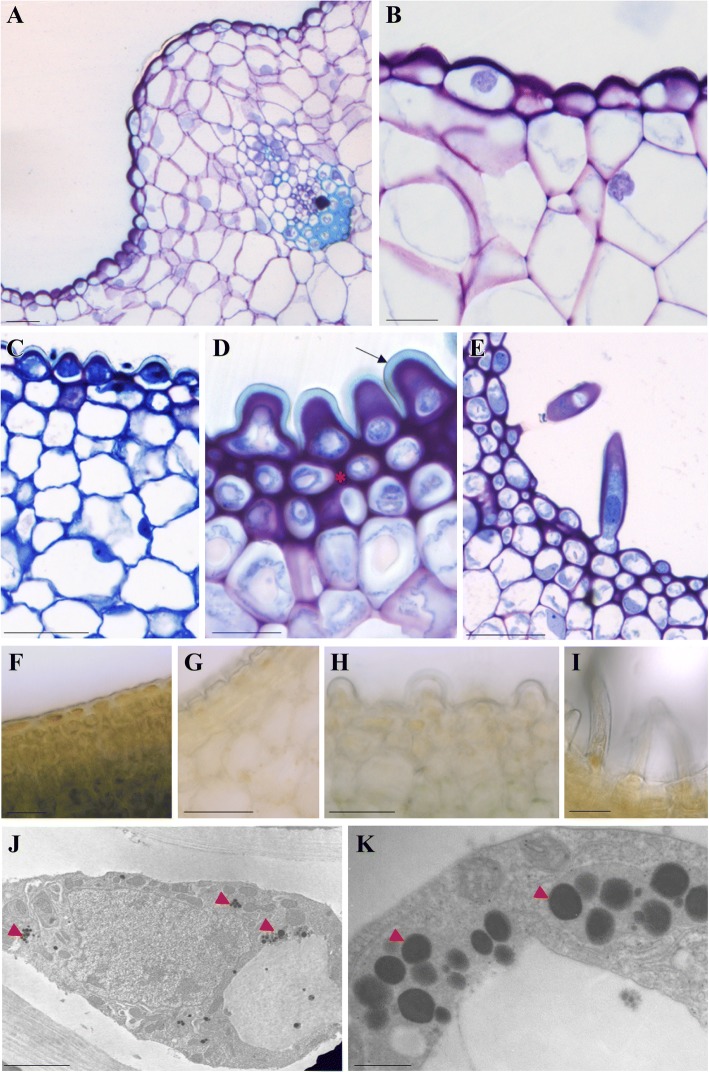Fig. 2.
Cellular aspects of cuniculus glands in selected Epidendrum species. a–e Structural aspects stained with toluidine blue O. f–i Sections stained with Fehling’s reagent for reducing sugars. j–k Ultrastructure of the glandular trichomes. a, b, f Ordinary nectary epidermis in E. vesicatum (a and b); positive staining indicative of reducing sugars in the nectary epidermis and parenchyma (f). c–e, g–k Unicellular glandular trichomes (osmophores). Small trichomes in E. ibaguense (c) and E. ciliare (g). Medium trichomes in E. flammeus (d) and E. cochlidium (h, k). e, i–j Long trichomes in E. fulgens. Note the thick cuticle (arrow in d), the adjacent collenchyma tissue (* in d), and the absence of reducing sugars inside the glandular trichomes, regardless of their size (g–i). Lipophilic droplets (red arrowheads in j and k) are observed in the protoplasts of glandular trichomes. Scale bars = 50 μm (a–i) and 0.5 μm (j, k)

